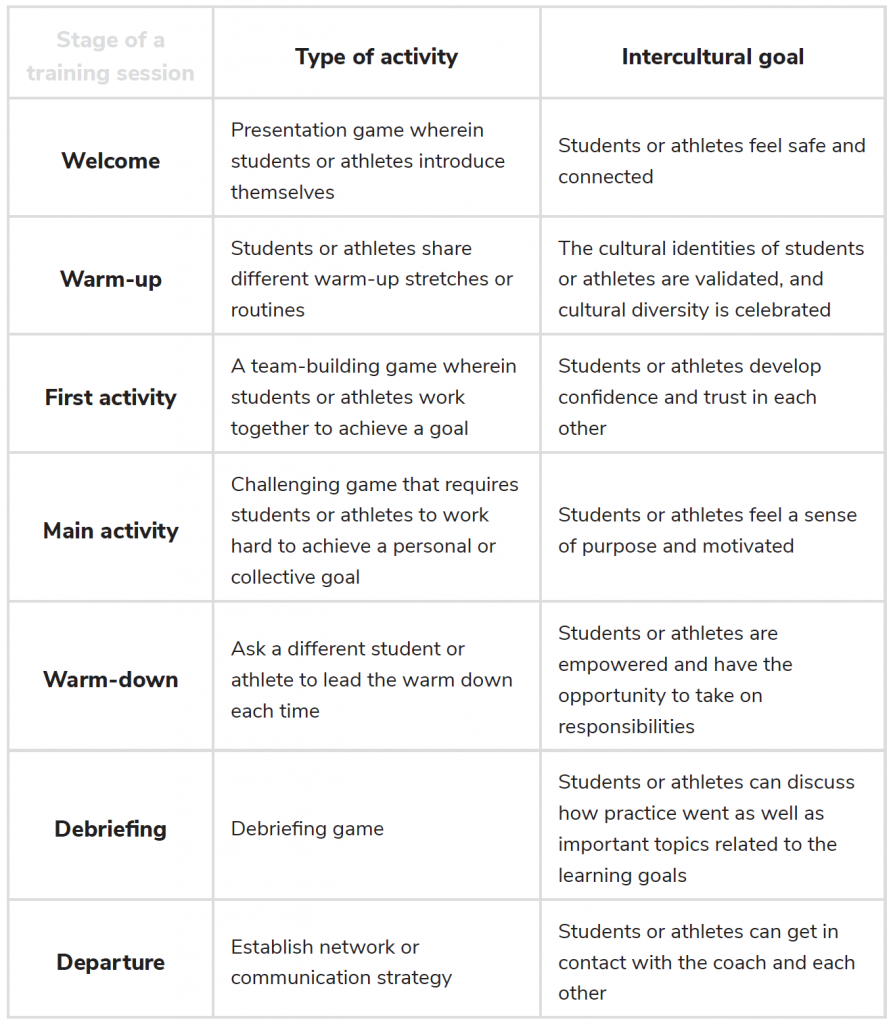Once you have established the goal(s) of your intercultural learning sessions, it is important to keep in mind a few success factors of intercultural learning. Indeed, promoting intercultural learning requires a specific lens through which physical education teachers and coaches should prepare their learning sessions.
Accessibility
Accessibility is at the heart of intercultural learning. There are various ways of viewing accessibility, such as physical access (e.g. can participants get to the learning session?) and material access (e.g. do participants have the necessary materials to participate?). But there is also accessibility in a larger sense (e.g. are participants available during the proposed time or are the activities or games adapted to the capabilities and needs of the participants?).
Below you will see an adapted version of the 'Activity Wheel' proposed by Danish researcher Mads Hovgaard. This wheel maps out the different components of physical activity and helps visualise the different possibilities of adjusting activities in order to best suit the capabilities and needs of the participants. You can click through the different elements of the wheel here to find out more.
Creating a safe space
A fundamental need for every human being is a sense of safety. That is particularly the case when working with students or athletes who may already feel unsafe because of unfamiliarity with their environment. There are several ways of viewing safety:
Promoting cultural diversity
Cultural diversity is expressed first and foremost in the diversity represented among the physical education teachers and coaches. Moreover, cultural diversity is about sending a clear message that such diversity is not just welcomed but celebrated. Empowering students or athletes to share their culture via games and activities can be an effective strategy. Organising special cultural days could also be a way of developing a welcoming environment.
Appropriate communication
Clear and appropriate communication is essential for the promotion of intercultural learning. From the onset, it is important to adopt a communication style that is adapted to groups of individuals with varying levels of education and life experiences. As a rule of thumb, it is important to provide both written and oral communication. Relying on symbols and pictures can also be an effective way to communicate concepts and rules.
Ownership
Providing opportunities for students or athletes to take ownership of the learning session is an effective strategy to engage them in the content. This can be achieved by allowing them to take on certain responsibilities related to the preparation and facilitation of the learning session. It could also be in the form of co-organising an event or initiating a collective project.
There are various opportunities to promote intercultural learning throughout a learning session. Using the example of a sport training session, the table below demonstrates how each phase of a typical sport training session can be used to promote intercultural learning. The structure proposed below can be adapted according to any situation. Many of the intercultural goals will take time to achieve, so it should not be expected that each goal can be achieved in a single learning session.
